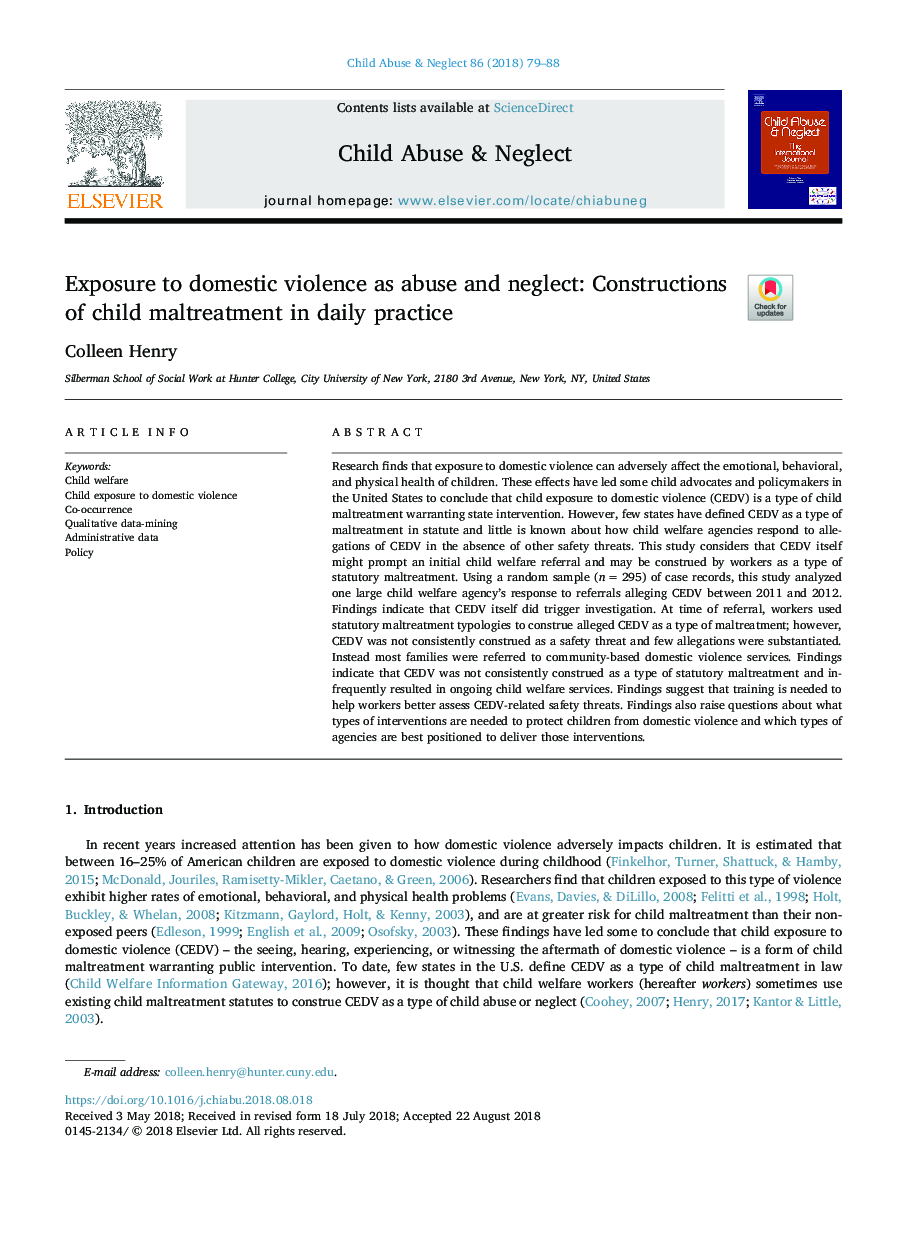| Article ID | Journal | Published Year | Pages | File Type |
|---|---|---|---|---|
| 11024061 | Child Abuse & Neglect | 2018 | 10 Pages |
Abstract
Research finds that exposure to domestic violence can adversely affect the emotional, behavioral, and physical health of children. These effects have led some child advocates and policymakers in the United States to conclude that child exposure to domestic violence (CEDV) is a type of child maltreatment warranting state intervention. However, few states have defined CEDV as a type of maltreatment in statute and little is known about how child welfare agencies respond to allegations of CEDV in the absence of other safety threats. This study considers that CEDV itself might prompt an initial child welfare referral and may be construed by workers as a type of statutory maltreatment. Using a random sample (nâ=â295) of case records, this study analyzed one large child welfare agency's response to referrals alleging CEDV between 2011 and 2012. Findings indicate that CEDV itself did trigger investigation. At time of referral, workers used statutory maltreatment typologies to construe alleged CEDV as a type of maltreatment; however, CEDV was not consistently construed as a safety threat and few allegations were substantiated. Instead most families were referred to community-based domestic violence services. Findings indicate that CEDV was not consistently construed as a type of statutory maltreatment and infrequently resulted in ongoing child welfare services. Findings suggest that training is needed to help workers better assess CEDV-related safety threats. Findings also raise questions about what types of interventions are needed to protect children from domestic violence and which types of agencies are best positioned to deliver those interventions.
Related Topics
Health Sciences
Medicine and Dentistry
Perinatology, Pediatrics and Child Health
Authors
Colleen Henry,
